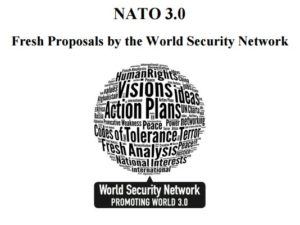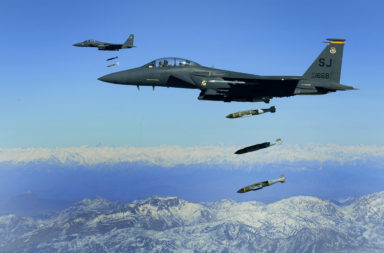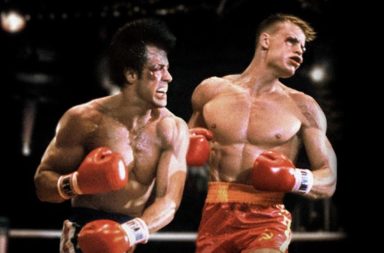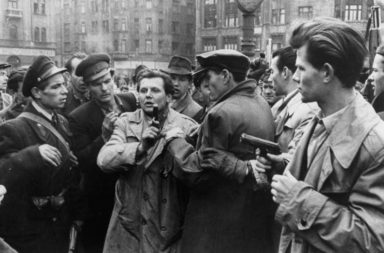After too long of a pause, the NATO Russia Council met again in Brussels last week. A lot of discussion was and is needed.
Mainly about the Ukraine conflict broiling, including more than 400 armored vehicles on the side of the pro-Russian rebels and many Russian soldiers involved in the Donbas, several breaks of the cease fire from Minsk II, and no political solution for autonomy and local elections – a bleeding wound in Europe.
There were several confrontations with Russian planes in the air recently.
A political solution for Syria can only work together with Russia. Cooperation is needed, necessary, and works in some areas.
A full program to discuss within NATO, with Kiev and Moscow.
GLOBALO has presented a possible solution for Ukraine with the White Paper of the World Security Network, including better relations between NATO and Russia. Political leadership, creativity and actions are needed now. It must include pressure on Moscow and on the Kiev government as well to implement autonomy in the Donbas.
Moscow until today follows a destructive policy against the alliance and needs a re-set of the relations with NATO and the West and more flexibility. The adventures must stop now.
NATO, the core defense instrument of the West and the main transatlantic link, is unfortunately split and almost paralyzed in its strategic approach below the surface:
- The United States and the Eastern members like Poland and the Baltic states want re-armament first. They see even meetings like in the Russia NATO Council as “concessions”. They are NATO’s Freeze Group.
- NATO Secretary General Jens Stoltenberg from Norway is more close to this group, as the alliance is dominated by the United States. He is supported by his Deputy US Ambassador Alexander “Sandy” Vershbow. He had been US Ambassador to NATO (1998-2001) and Ambassador in Moscow (2001-2005) “Lets not talk about a Harmel II here!”, he demands.
- On the other side, the Germans and several Western European partners argue: We need to talk and meet, even more so in times of crisis- NATO’s Harmel group.
- The American State Department is led by a smart, more Harmel-esque Secretary John Kerry, but he is fixed on Syria and leaves the day to day business to influential people like Victoria Nuland. As Assistant Secretary of State for European Affairs, she sets the rules and barriers, and belongs to the freeze group. She knows NATO well as former US Ambassador from 2005-2008. Before she worked for Vice President Dick Cheney as his “principal deputy foreign policy adviser“ and therefore was involved in all wrong decisions in the mismanagement of the two wars in Iraq and Afghanistan. Nuland is married to neocon icon Robert Kagan. She is Mrs Ukraine from the US. Her personal mission is to support Ukraine under all conditions, and to get Russia out. She has roots there, as her Jewish family (Nudelmann) came from Odessa. Until now the in reality unconditional support of Kiev by Washington has led to an implosion of the still corrupt, reform-averse and unexperienced government. Radical reforms like in Estonia (starting in 1992) are needed in Ukraine, but almost nothing has happened in the years since.The superficial design and too little planing of the Ukraine policy can be described as another mismanagement and disaster of a too naive American foreign policy.
What does this split in NATO mean for NATO Europe and the US? What is the Harmel Doctrine?
- In 1967 NATO had exactly the same fundamental problem as now in 2016: Should we meet and talk with our Russian enemy or just push deterrence and a credible defense in Europe? Can we start detente or just continue the Cold War forever?
- Then Belgian foreign minister Pierre Harmel formulated his famous Harmel Report. He said we need both: to talk and detente, as well as sufficient defense capabilities; we need many discussions and a credible deterrent. It is like NATO resting on two equal pillars: credible defense and detente. Now the Americans involved want to change this to base it on defense only- like they pushed it in Iraq and Afghanistan with deadly consequences.
- In December 1979, this basic strategic approach prevailed in NATO’s Two Track Decision. I had the honor to promote it with my study, “Armament and Disarmament in the Euro-Nuclear Sphere” for my member of the German Bundestag, later State Secretary of Defense Peter Kurt Würzbach. In May 1979, I promoted the deployment of Pershing 2 missiles and land-based cruise missiles and added the zero option: When the Russians withdraw their SS 20 missiles, which were aimed at Western Europe, NATO will destroy its new missiles. It worked perfectly with the INF Treaty in 1987: No medium range nuclear missiles in Europe any more.
So NATO, the United States and Western Europe won the Cold War by this clever Harmel approach. This is our core strategy and nothing else. We could avoid war and win peace and freedom for Eastern Europe. Now we need a Harmel 2 approach or we will lose the next phase.
It is a pity that out of naive ignorance, important American diplomats have forgotten these lessons. They should remember their own failures in their old strategies for Iraq and Afghanistan, where the failure of a centralized government and real reconciliation became the base for ISIS and a refreshing Taliban. Important American diplomats have failed in the past to prove they have a better approach than Harmel for the alliance.
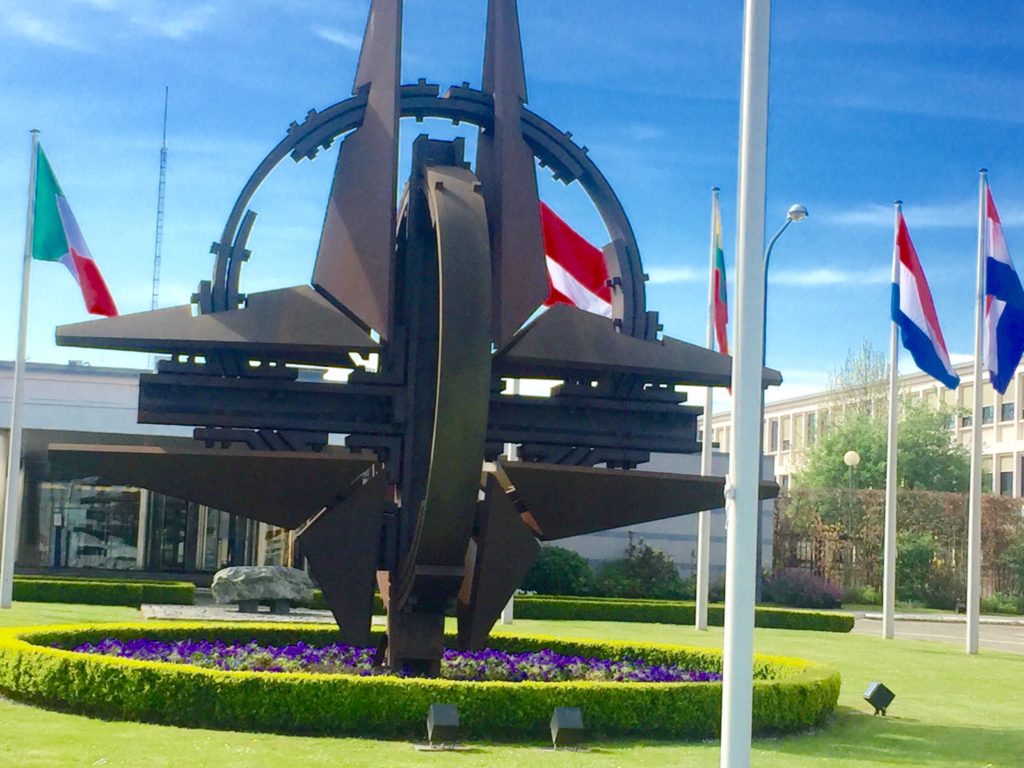
We need a fresh approach NATO 3.0, which experts from eight NATO member countries formulated in a proposal by the World Security Network already, on September 6th, 2013.
NATO 3.0 must include Harmel II and sufficient defense as well as new creative tools:
- The Harmel approach as the number one base of the alliance. Embedded, tailored double strategies of power and diplomacy – as was so successfully done with NATO’s Harmel Report in 1967 or in NATOs Two Track Decision in 1979, using multiple soft tools of peace-making at an earlier stage to contain threats – while being prepared to fight if needed. This must include sufficient defense capabilities in the Eastern and Baltic member states. We need both at the same time.
- Not more nice demands on paper in communiques but implementation by all member states. No more blocking of the necessary reforms in the Alliance at the national level, but co-ownership of the NATO Headquarters in an urgent reform process with the 28 Heads of Member States.
- A list of short- and long-term reform steps, including timetables, price tags and a control mechanism to check up on progress.
- A totally new set-up, fresh dynamic and ongoing reform process in all member states initiated by a well-coordinated, top-down approach from both the NATO Headquarters and Heads of States and Governments. Otherwise, any reform process will fail.
- A modern, flexible security and defense structure, including maximum cost-efficiency.
- Sufficient national funding of two percent of GDP as a NATO benchmark to avoid further erosion of credible defense and to avoid “provocative weakness” (Fritz Kraemer). Most European allies must invest more in modern defense capabilities, which are their insurance against crisis and war and for liberty and stability. In the meeting with Angela Merkel, US President Obama demanded in Hannover last Sunday to spend more on defense. Germany will increase the defense budget from € 34,2 billon to € 39,4 billion in four years. But Germany will again not reach the NATO aims of two percent equal to € 60 billion- a shame.
- Thus, a comprehensive Smart Defense approach by those member states that are willing to proceed in their mutual cooperation should be made mandatory.
- A much better link between foreign and defense policies to build up an effective early forward defense against new threats using best practices from all over the world and much more creativity.
- To analyze and agree on the new threats and how to contain and deter those unknown risks using the hard and soft elements of peacemaking with detailed but flexible action plans rather than only short-term crisis-management when it is very late. The establishment of a NATO Early Warning System in order to identify possible risks, dangers and threats at an early stage and an effective NATO Cyber Defense is clearly justified. This would create new opportunities to put the comprehensive approach into practice, so it would not only always be reacting to live crises with military intervention – rarely at the right time.
- To focus on the build-up of responsible elites in our partner countries and partners for peace who promote know-how and shared democratic values based on the UN Charter and the Washington Treaty.
- Both the U.S. and Europe need a solid national economic base in order to afford sufficient armed forces, extend economic support to underdeveloped countries and ensure internal stability and credibility as democracies. For a decade, the XXL-greedies and XXL-public debt have been sawing away at the branch on which we are sitting at NATO. Public debt must be reduced to a stable 60 percent of GDP level in all NATO countries as a basis of transatlantic stability. Without sufficient economic power, the sword of NATO remains dull and the West a lame duck. We only won the Cold War because of the enormous economic superiority of the West, which is now threatened.
Read all details about NATO 3.0 by clicking the image below:
